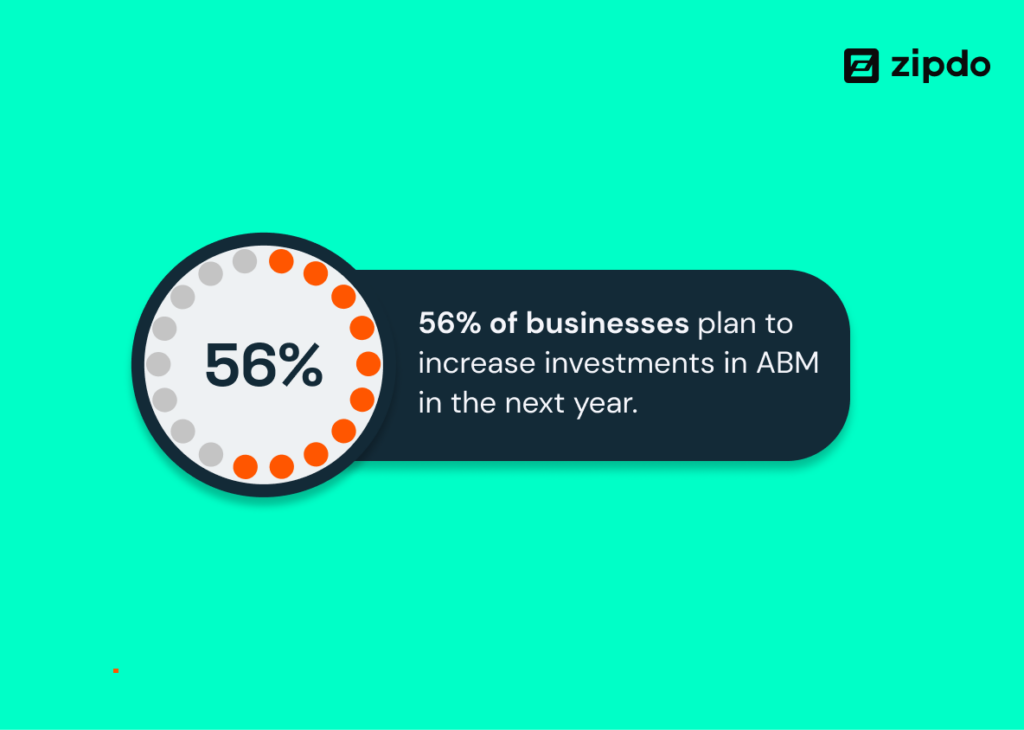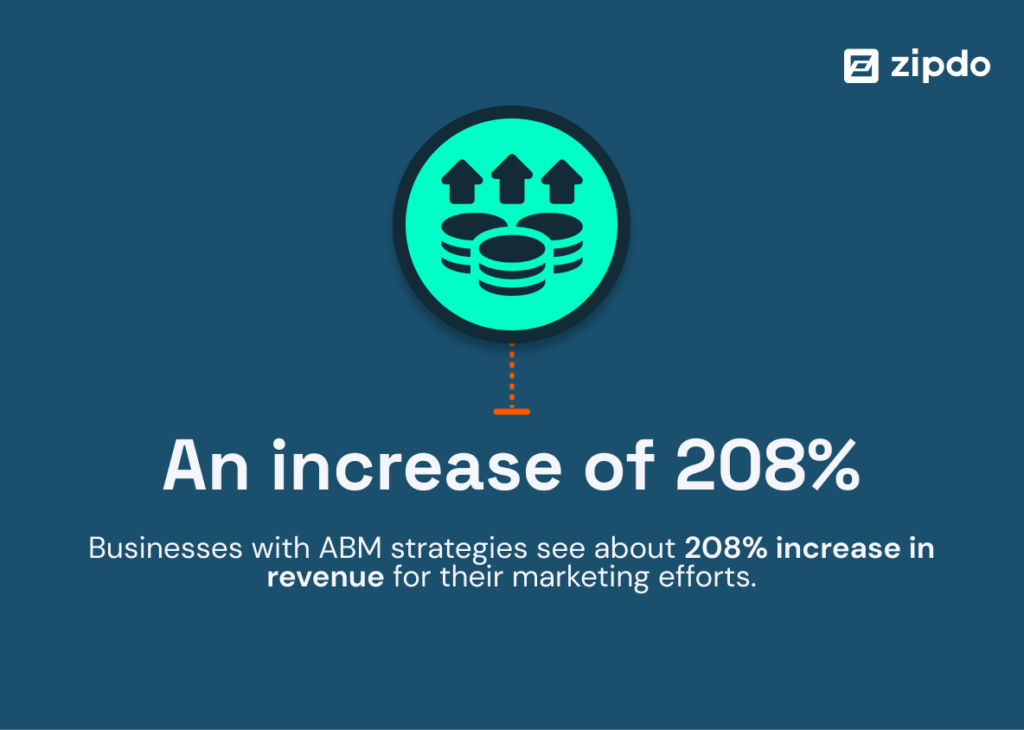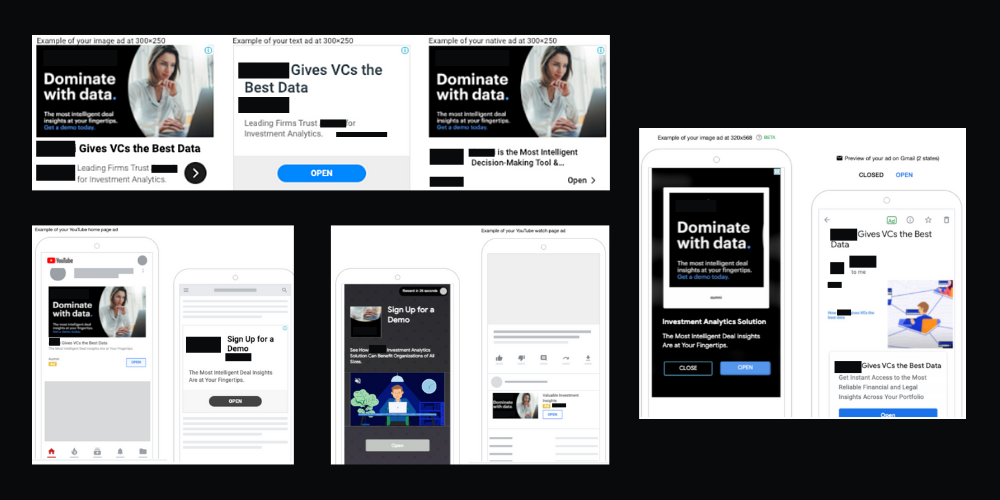The incredible versatility of account-based marketing (ABM) is what drives its popularity across marketing and sales teams alike. According to HubSpot's State of Marketing Report, 70% of marketers now have an active account-based marketing program in their marketing strategy, and it's paying off in sales.
Regardless of your product or target audience, ABM has the potential to boost demand generation, expedite deal closures, and enhance the lifetime value of your customers. Here I'll share everything I know about the topic.
What Is Programmatic Account-Based Marketing?
Programmatic Account-Based Marketing (ABM) is a 1:many (one-to-many) strategy within B2B marketing, alongside the two other types of account-based marketing: Strategic ABM and ABM Lite. It combines precision targeting with automation, delivering personalized marketing campaigns at a huge scale.
Compared to Strategic ABM's deep, one-to-one marketing approach or ABM Lite's broader, one-to-few tactics, Programmatic ABM offers greater efficiency and scalability. It identifies target accounts based on potential value, utilizing marketing automation software and advanced targeting for personalized engagement. This approach allows for reaching a larger audience without sacrificing personalization, resulting in higher engagement and conversions!

By integrating real-time data and analytics, Programmatic ABM continuously optimizes marketing campaigns for maximum effectiveness and ROI.
Benefits of Programmatic ABM
Improved Metrics
Programmatic ABM revolutionizes account-based marketing metrics by delivering tangible improvements in key performance indicators (KPIs) such as Cost per Click (CPC), Cost per Lead (CPL), and Customer Acquisition Cost (CAC). By employing point-shot targeting, this approach ensures that resources are allocated efficiently, resulting in reduced costs and enhanced ROI.
Precision and scalability
Unlike traditional marketing methods, which often rely on broad audience segmentation, Programmatic ABM enables marketers to pinpoint and engage with highly targeted accounts. This precision not only enhances the relevance of marketing efforts but also allows for seamless scalability, accommodating the needs of both small-scale and large-scale campaigns.
Ability to track the buyer’s journey
Understanding the buyer's journey is paramount to success. By leveraging intent data and other insights, marketers can tailor their messaging and approach to align with the needs and preferences of their target audience, ultimately driving higher conversion rates and accelerated sales cycles.
Simplified customer acquisition
Traditional customer acquisition methods often entail a complex and time-consuming process. Programmatic ABM streamlines this process by identifying high-value accounts and personas while delivering personalized web content at scale, helping with the customer acquisition journey, reducing friction and accelerating the path to purchase. This simplified approach results in faster revenue growth and increased market share.

Challenges of Programmatic ABM
It takes time to implement
Implementing a Programmatic ABM strategy demands substantial time investment due to its intricacy. However, the meticulous implementation lays a robust foundation for successful and efficient campaign execution.
It takes time to yield results
Unlike the swift impact of tactics like pay-per-click advertising, Programmatic ABM typically necessitates a longer lead time before notable results manifest. Patience and strategic monitoring are key during campaign deployment.
The tools aren’t exactly cheap
Costs span from ad inventory expenses to fees for data management platforms and advertising technology vendors. Thus, committing to Programmatic ABM requires careful consideration of all software options available.
Thankfully, we have compiled a list of the best account-based marketing software to help you with your selection.
How To Decide If Programmatic ABM Is For You
Essentially, if you want to optimize costs and increase revenue, Programmatic ABM is the solution for you. Here are some questions to consider when determining if Programmatic ABM is the right fit for your organization:
- Do you have a large target account list? Programmatic ABM is ideal for reaching a wide audience of high-value accounts efficiently and at scale.
- Are you looking to streamline your marketing efforts? If you want to simplify customer acquisition and improve efficiency in reaching target accounts, Programmatic ABM offers automation and precision targeting capabilities.
- Is personalization a priority for your marketing strategy? Programmatic ABM allows for highly personalized ads and campaigns tailored to the specific needs and preferences of individual accounts.
- Do you have the resources to invest in advanced marketing technologies? Programmatic ABM requires investment in tools and technologies for automation, data management, and analytics.
- Are you focused on driving measurable results and ROI? Programmatic ABM enables you to track key metrics and optimize campaigns for maximum effectiveness and return on investment.
Programmatic ABM may be preferable over Strategic ABM or ABM Lite if…
- You have a large number of target accounts. Programmatic ABM's scalability makes it more suitable for reaching a broad audience efficiently.
- You have limited resources or bandwidth for manual, one-to-one engagement (Strategic ABM) or one-to-few tactics (ABM Lite). Programmatic ABM's automation capabilities can help streamline your marketing efforts.
- You prioritize efficiency and cost-effectiveness in your marketing efforts. Programmatic ABM's ability to reach a larger audience with personalized messaging may offer a more efficient approach compared to Strategic ABM's intensive manual efforts or ABM Lite's broader targeting.
How To Create A Programmatic ABM Strategy
Want to see ABM success? Here are a few steps to get you started!
1. Define Goals and Metrics
Begin by gathering your decision-makers and establishing clear goals and KPIs that closely align with your organizational goals. Whether your aim is to drive lead generation, accelerate pipeline growth, or enhance customer retention, clarity should be guiding you forward.
Defining measurable metrics upfront allows you to effectively gauge the success of your marketing campaigns and make informed decisions to optimize performance over time.
For instance, if your goal is to increase deal sizes, examples of KPIs might include metrics such as customer lifetime value, upsell revenue, average contract value (ACV), or average order value (AOV). By setting specific, measurable, achievable, relevant, and time-bound (SMART) objectives, you can make sure that your strategy remains focused and aligned with your overarching business objectives.
2. Build Target Account Lists
Utilize the power of data-driven insights and predictive analytics to compile a list of high-value target accounts with your ideal customer profile who have the highest chance for conversion. This involves leveraging advanced technologies to analyze past customer behavior, industry trends, and market dynamics to identify accounts with the greatest revenue potential.
You may prioritize accounts based on
- Revenue potential
- Industry influence
- Alignment with offerings
- Long term goals
- Target demographics
Whatever you decide, your software can dive deeper and target accounts based on your criteria. It’s almost too easy!
3. Personalize Creative
Tailor your digital marketing messaging, creative assets, and ad copy to resonate deeply with the unique needs, pain points, and motivations of your target accounts. This involves developing highly customized, targeted content that speaks directly to the challenges and aspirations of your audience, fostering a sense of relevance and connection.
A person’s name is to that person the sweetest and most important sound in any language.
Dale Carnegie
Embrace dynamic content personalization and A/B testing to fine-tune your messaging and creative assets, ensuring maximum engagement and conversion rates across your programmatic account-based marketing campaigns.
4. Consider the Buyer's Journey
Map out the entire buyer's journey for your target accounts, from initial awareness to final conversion, and beyond. Identify key touchpoints and decision-making stages along the funnel, and develop tailored messaging strategies to address the specific needs and concerns of prospects at each stage.
Utilize a holistic mix of display ads, retargeting campaigns, email marketing, and content syndication to deliver targeted messages and nurture prospects through the buyer's journey toward conversion.

5. Measure and Adjust
An ABM strategy is different from your typical demand gen strategy, so you’re going to be looking at different measurements!
Volume → Value
Instead of focusing on how many people you’re reaching, you should be focused on reaching “qualified” leads. Individuals who could be interested in spending money on your product. You want the right leads, not just any lead. This is where the importance of MQLs (Marketing Qualified Leads) comes in.
Account Engagement
Measuring account engagement is essential for ABM as it provides valuable insights into campaign performance, relationship development, personalization effectiveness, lead prioritization, and optimization opportunities, ultimately driving more impactful and successful marketing outcomes.
Here are some popular engagement metrics you may want to track:
- Accounts reached: The number of accounts from your list that were served at least one ad or opened at least one email.
- Accounts visited: The number of accounts from your list that viewed at least one page on your website.
- Accounts engaged: The number of accounts from your list with at least three page views.
- Unique visitors: Self-explanatory, the unique visitors you get.
- Total page views: Also self-explanatory, the number of page views.
How to measure ABM campaign performance
Knowing your campaign’s performance is essential so you can evaluate your ABM plan over and over again, tweaking as you go. You can look at things like:
- Accounts targeted: Total accounts included in the campaign.
- Target account responses generated: Total targets that responded to the ad (could be measured by a form fill or page view).
- Target account meetings booked: Number of meetings booked!
- Opportunities generated: A count of net new opportunities generated from the campaign.
- Pipeline value: The total dollar amount of the net new opportunities.
Your Programmatic ABM Future
Programmatic ABM is emerging as a dynamic and effective strategy within the scope of B2B marketing. Its adaptability, precision, and scalability make it necessary for modern marketing initiatives. When 56% of businesses plan to increase investments in ABM in the next year, you don’t want to be left out!
By aligning goals and metrics, building account lists, personalizing content, and continually measuring and adjusting strategies, organizations can harness the full potential of Programmatic ABM.
If you found this article helpful, or know someone who would, share it on social media and LinkedIn! Want more expert tips and updates? Be sure to subscribe to The CMO newsletter to receive all the latest trends and strategies in B2B marketing straight to your inbox. Let's elevate our marketing game together!


